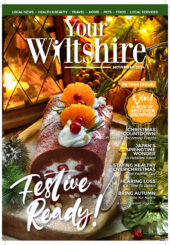
Darren Watts, Showroom Design Director at Wren Kitchens, Dr Emma Scales-Theobald, PhD, and Veterinary Surgeon at PetPlan, Brain Faulkner, share how to dog proof your kitchen.
Integrated rubbish disposals, feeding areas are key, whilst raw potatoes and onions should be kept far away from dogs.
As National Dog Day lands on Monday 26th of August, Darren Watts, Showroom Design Director at Wren Kitchens, Veterinary Surgeon at PetPlan, Brain Faulkner, and Dr Emma Scales-Theobald PhD from Canine Cottages, advise on how to dog-proof your kitchen.
An estimated 12 million UK households own a dog, and so they warn that common kitchen features and cupboard ingredients could be a hazard to your dog, such as rubbish bins and even raw potatoes.
Integrate food storage and rubbish disposal.
Whilst most households have a free-standing bin, Darren suggests incorporating rubbish disposal into cupboards or storage.
“Dogs can be attracted to the smell of food and scraps within your rubbish bin, leading them to rummaging and creating mess, or worst-case scenario, hurting themselves on sharp objects in the process. Look to integrate bins into your cabinetry to not only keep your dog safe but create extra space within your kitchen and maintain a sleek design in your space.”
Create a designated dog section.
To separate food preparation and dining areas from your dog’s space within the kitchen, Darren says to consider creating a designated area for your pooch.
“A clever design idea is to integrate dog food and water bowls into the side of a kitchen unit to avoid spillage or tripping over loose bowls. You can also create an empty space below your worktop to place the dog bed in to create space and reduce obstacles, to limit kitchen traffic. This design hack is exceptionally good for awkwardly shaped kitchens or smaller kitchens, where space is limited.
Additionally, you can store everything in one easy and convenient location. Stack pouches or dog treats vertically to save space. If your pet is taking any medication daily, use a pill organiser marked with days of the week to help keep track.
If your kitchen has a pull out bin drawer, swap the rubbish bin for a large container and store dry cat or dog food in here with a scoop.”, he adds.
Whilst many know the likes of chocolate, grapes and raisins are toxic for dogs, Dr Emma and Dr Brian share the surprising everyday foods you should keep far away from dogs in safe storage:
Chives and onions.
These kitchen staples can be harmful for your pooch, according to Dr Emma, as she says, “These are part of the Allum family which is toxic for dogs because they contain a toxin called organosulfides, which can harm your dog’s red blood cells.”
Avocado and Guacamole.
Although avocado is a nutritious ingredient for humans, Dr Emma warns that, “These contain persin, which can cause severe vomiting and diarrhoea in your dog. The avocado pit can also be a choking hazard.”
Raw potato.
A cupboard staple in many households, this root vegetable is toxic for our dogs, as Dr Emma explains it “contains solanine, which can be very toxic, even in small quantities.”
Cherries, Peaches and Plums.
These delicious fruits “contain cyanide and are a choking hazard”, according to Dr Emma. Dr Brian further explains, “It is the seeds and pits of apples, apricots, plums and cherries that contain cyanide, which in large doses can cause vomiting, an irregular heartbeat and possibly seizures.”
Lactose.
Dr Brian explains that most dogs are in fact lactose intolerant, and so should steer clear of the likes of milk, cream, and ice cream. He adds, “lactose can cause diarrhoea, bloating and abdominal discomfort.”
Macadamia nuts.
Fatty foods in general can be harmful for dogs, according to Dr Brian, as they can cause pancreatitis, a life threatening illness. He specifically highlights macadamia nuts as a risk, adding, “The high fat content of macadamia nuts makes them poisonous for dogs. Symptoms of poisoning include vomiting, diarrhoea and lack of coordination.”

